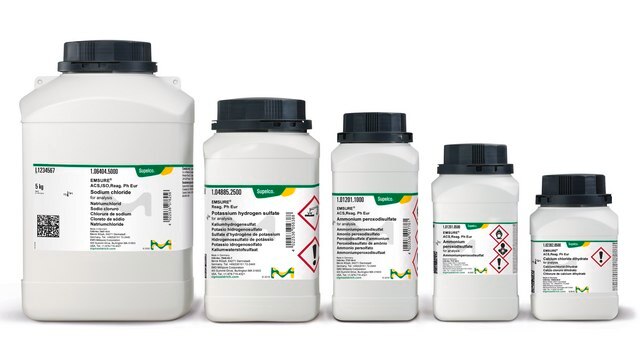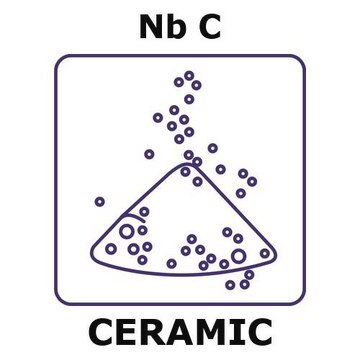203122
Kupfer
powder, 99.999% trace metals basis
Synonym(e):
Cu powder
About This Item
Empfohlene Produkte
Qualitätsniveau
Assay
99.999% trace metals basis
Form
powder
Widerstandsfähigkeit
1.673 μΩ-cm, 20°C
bp
2567 °C (lit.)
mp (Schmelzpunkt)
1083.4 °C (lit.)
Dichte
8.94 g/mL at 25 °C (lit.)
SMILES String
[Cu]
InChI
1S/Cu
InChIKey
RYGMFSIKBFXOCR-UHFFFAOYSA-N
Verwandte Kategorien
Allgemeine Beschreibung
Anwendung
Leistungsmerkmale und Vorteile
✔ Consistent quality
✔ Ultra high purity
✔ Available to scale up: bulk and pilot scale
Signalwort
Danger-Danger
Gefahreneinstufungen
Aquatic Acute 1 - Aquatic Chronic 1 - Flam. Sol. 1
Lagerklassenschlüssel
4.1B - Flammable solid hazardous materials
WGK
WGK 2
Flammpunkt (°F)
212.0 °F
Flammpunkt (°C)
100 °C
Persönliche Schutzausrüstung
Eyeshields, Gloves, type P3 (EN 143) respirator cartridges
Zulassungslistungen
Zulassungslistungen werden hauptsächlich für chemische Produkte erstellt. Für nicht-chemische Produkte können hier nur begrenzte Angaben gemacht werden. Kein Eintrag bedeutet, dass keine der Komponenten gelistet ist. Es liegt in der Verantwortung des Benutzers, die sichere und legale Verwendung des Produkts zu gewährleisten.
EU REACH Annex XVII (Restriction List)
Analysenzertifikate (COA)
Suchen Sie nach Analysenzertifikate (COA), indem Sie die Lot-/Chargennummer des Produkts eingeben. Lot- und Chargennummern sind auf dem Produktetikett hinter den Wörtern ‘Lot’ oder ‘Batch’ (Lot oder Charge) zu finden.
Besitzen Sie dieses Produkt bereits?
In der Dokumentenbibliothek finden Sie die Dokumentation zu den Produkten, die Sie kürzlich erworben haben.
Kunden haben sich ebenfalls angesehen
Artikel
Permanent magnets are an essential technology for energy conversion. Motors and generators are used to convert energy between electrical and mechanical forms.
Spectral conversion for solar cells is an emerging concept in the field of photovoltaics, and it has the potential to increase significantly the efficiency of solar cells. Lanthanide ions are ideal candidates for spectral conversion, due to their high luminescence efficiencies and rich energy level structure that allows for great flexibility in the upconversion and downconversion of photons in a wide spectral region (NIR-VIS-UV).
Unser Team von Wissenschaftlern verfügt über Erfahrung in allen Forschungsbereichen einschließlich Life Science, Materialwissenschaften, chemischer Synthese, Chromatographie, Analytik und vielen mehr..
Setzen Sie sich mit dem technischen Dienst in Verbindung.






